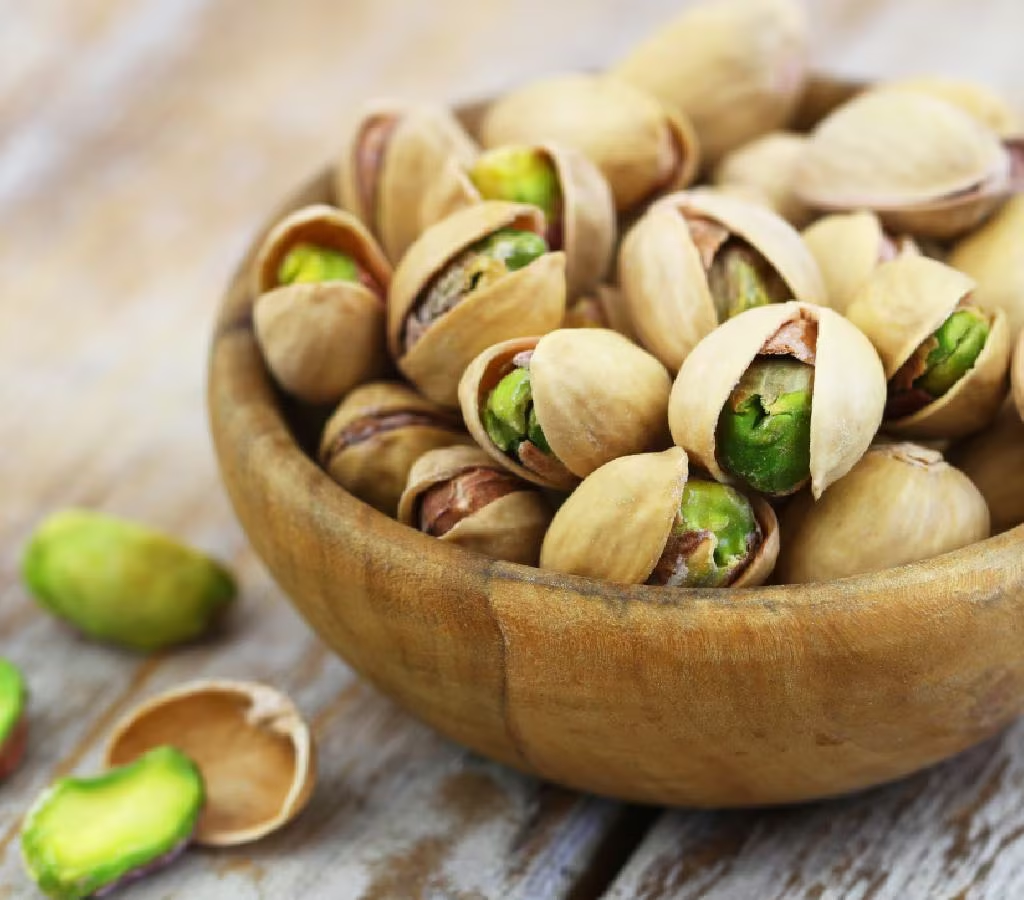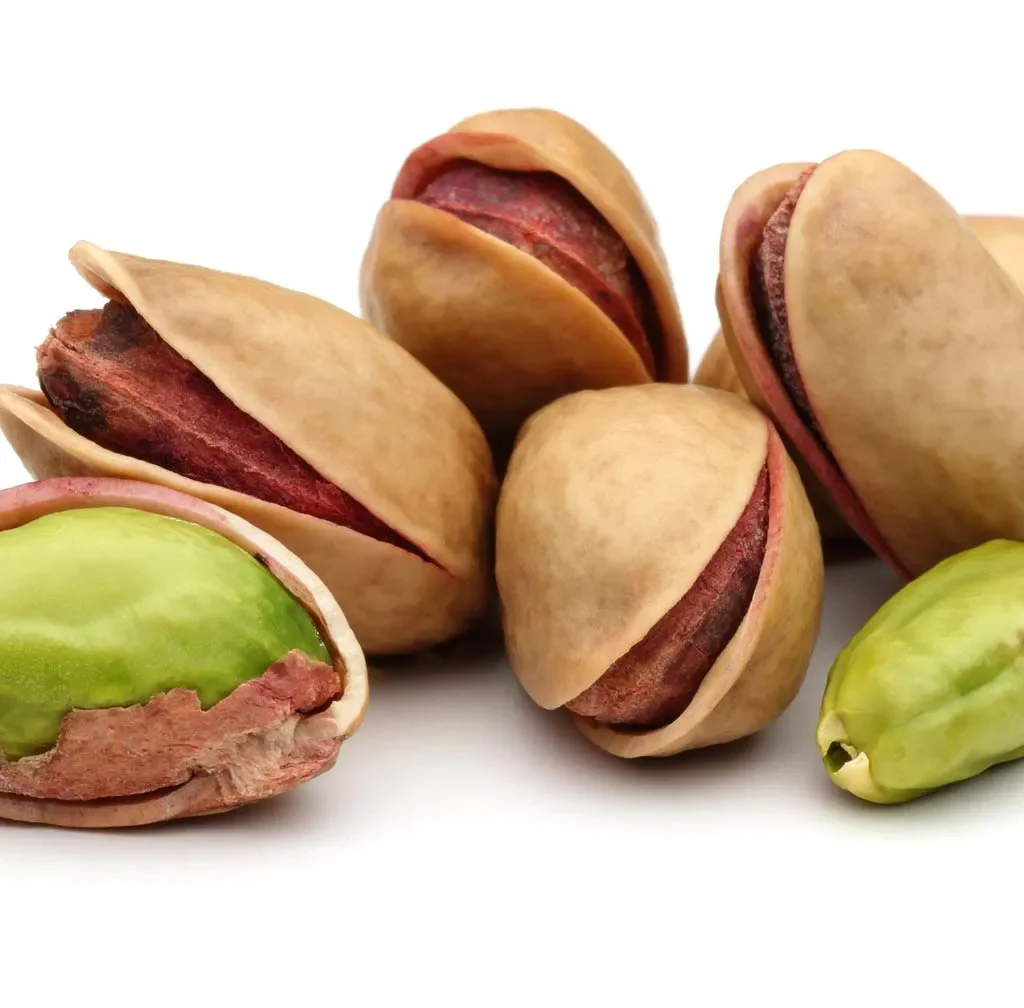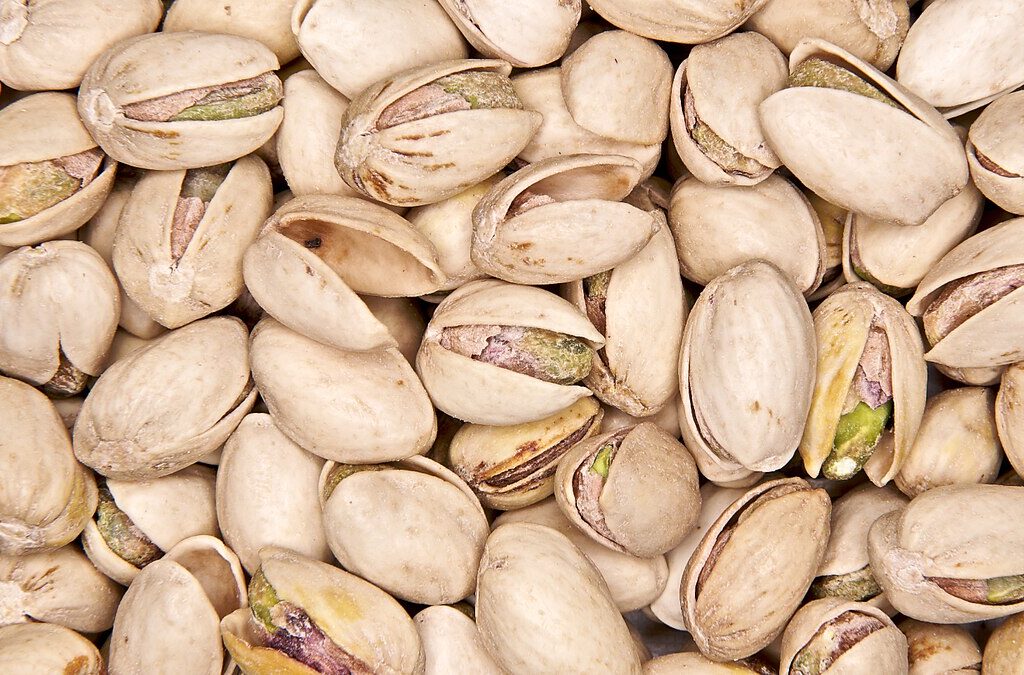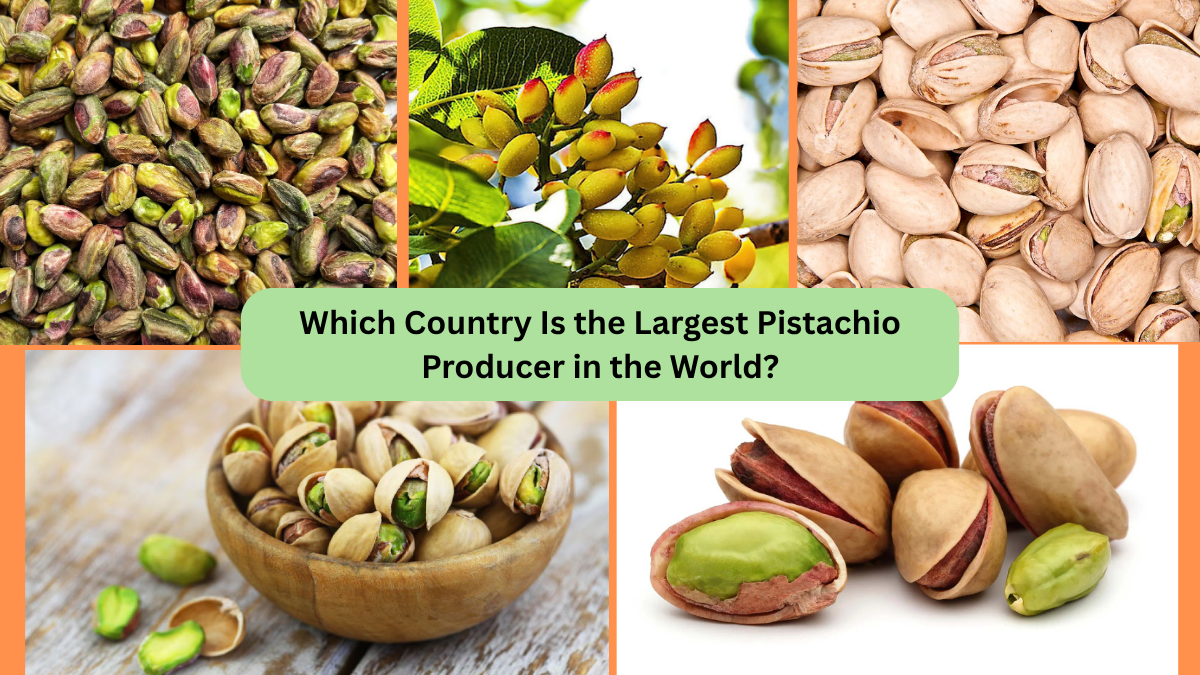Pistachios have surged in global popularity—praised for their distinct flavor, nutritional benefits, and culinary versatility. But which nation leads the pack in pistachio production? Let’s explore the top producers, their strengths, and what it all means for this thriving nut industry.
United States: The Unrivaled Leader

The United States currently stands as the world’s largest pistachio producer, with around 400,000–524,000 tons produced annually .
- Production statistics:
- FAOSTAT reports U.S. production at ~400,070 t in 2022 (~67 % of global output) de.wikipedia.org+3worldpopulationreview.com+3en.wikipedia.org+3.
- Data from AtlasBig estimates U.S. output at ~523,900 t de.wikipedia.org+2atlasbig.com+2atlasbig.com+2.
- Export powerhouse: The U.S. is the top exporter, leading in-shell shipments to markets like China, the EU, and India. In 2024 alone, California generated nearly $3 billion from pistachios worldpopulationreview.com+4apnews.com+4globaltopstats.com+4.
Why the U.S. Dominates
- California’s climate: Ideal Mediterranean weather—hot, dry summers and mild winters.
- Water-efficient crop: Requires 30–50% less water than almonds, resistant to saline soils apnews.com+1reddit.com+1.
- Advanced cultivation: Precision farming, innovative rootstocks, mechanized harvesting—led by companies like Wonderful Co. apnews.com.
- Export market strategy: Aggressive trade relations, including a recent tariff reduction in China from 125% to 10%, boosting exports from $42 million in 2017 to $842 million wsj.com.
Iran: Global Power in Quality & Export
Iran ranks second in volume but continues to lead in global pistachio quality and kernel exports.
- Volume: ~241,700 t in 2022—about 17% of global output .
- Export excellence: Dominates shelled pistachio exports (~70% share), supplying over $1 billion annually atlasbig.com+3globaltopstats.com+3currentaffairs.adda247.com+3.
- Historic strength: Regions like Kerman and Rafsanjan are legendary—producing premium nuts under water- and energy-subsidized farming en.wikipedia.org+1en.wikipedia.org+1.
Unique Strengths
- Rich heritage: Pistachios have been cultivated for millennia—deep-rooted cultural and culinary significance.
- Ideal terroir: Kerman and Yazd offer hot summers and cold winters—perfect for pistachio trees reddit.com+9apnews.com+9worldpopulationreview.com+9.
- Economic structure: Government support ensures profitability despite water-intensive methods.
- Alternate yield cycles: Production can vary year-to-year but maintains strong overall output apnews.comtaritrading.co.
Turkey: The Rising Contender

Turkey holds third place, often competing closely with Iran.
- Production: ~119,300 t in 2022 (~11% of global) en.wikipedia.org+2dev.populationstatistics.com+2en.wikipedia.org+2.
- Peak output: Recent years have seen highs of 230–260 t .
- Gaziantep center: This Anatolian region dominates—with roughly 60,000 t produced there in 2007 en.wikipedia.org.
What Turkey Brings
- Cultural cuisine: Pistachios are vital in desserts like baklava, halva, and Turkish delight apnews.com+4a-z-animals.com+4currentaffairs.adda247.com+4.
- Market diversification: Strong exports to the EU and growing in China statista.com.
- Production variability: Alternate bearing causes fluctuations—major highs in some years, lows in others taritrading.co.
Other Notable Producers
- China: Roughly 81,700 t, ranking fourth en.wikipedia.org+2worldpopulationreview.com+2dev.populationstatistics.com+2.
- Syria: ~45,467 t in 2022; historically top-four producer before civil war disruptions reddit.com+3worldpopulationreview.com+3dev.populationstatistics.com+3.
- Greece, Italy, Spain, Afghanistan, Tunisia, Australia: Smaller but culturally significant producers—ranging from ~1,500 to ~15,000 t .
Together, the U.S., Iran, and Turkey account for ~90% of global production dev.populationstatistics.com+3worldpopulationreview.com+3ratinkhosh.com+3.
Global Pistachio Production: Trends & Drivers

- Global total: About 911,800 t (2018) up to ~1 million t by 2022 .
- Market growth: Driven by health trends—pistachios are rich in protein, good fats, potassium, and antioxidants .
- Cost pressures: Shortages and demand spikes (e.g., viral Dubai chocolate) pushed prices from $7.65 to $16/lb news.com.au+2ft.com+2nypost.com+2.
- Water concerns: Droughts and scarce groundwater pose risks—though pistachios are more water-efficient than almonds reddit.com.
- Alternate bearing: Pistachio trees alternate heavy and light years, causing production swings en.wikipedia.org+15taritrading.co+15en.wikipedia.org+15.
What This Means for the Industry
Market Concentration: Production is heavily concentrated. Disruptions in California, Kerman, or Gaziantep could shake global supply.
Export Dynamics: U.S. leads in volume, but Iran excels in quality and kernel exports. Turkey is gaining share.
Demand Surging: Global pistachio demand is growing fast—China, India, Japan, and Europe are driving consumption .
Price Volatility: Viral trends (e.g., Dubai chocolate) can cause sharp spikes, while water shortages and crop variations fuel uncertainty .
Sustainability Needs: Water management, drought-resistant varieties, and fair labor practices are essential future focuses.
Final Verdict

- United States: Largest producer, with 400–524 k tons (~67%), thanks to efficient California farms, robust exports, and water-savvy agriculture.
- Iran: Second by volume, but arguably first in quality and kernel exports, with culturally significant cultivation in Rafsanjan and Kerman.
- Turkey: A strong third, culturally rich and increasingly export-ready.
- China, Syria, Greece, and others round out global production—playing niche but important roles.
The Road Ahead
Looking forward, the pistachio industry will be shaped by:
- Expanding orchards: California continues planting. Iran may boost acreage. Turkey stabilizes after weather fluctuations.
- Climate adaptation: Drought-proofing, precision irrigation, and disease-resistant varieties are becoming critical.
- Value-added innovation: Expect more pistachio oils, butters, snacks, and flavor-infused products (e.g., Dubai chocolate).
- Trade and geopolitics: U.S.–China deals, Middle Eastern markets, and global tariffs will influence economics.
Conclusion

The United States is the world’s top pistachio producer, generating around 400,000–524,000 metric tons per year, mostly from California. This is about two-thirds of global output. Meanwhile, Iran holds second place in volume and dominates in exports of kernels, and Turkey rounds out the top three with strong growth and cultural influence. With consumption rising and environmental challenges on the horizon, the pistachio sector is poised for both opportunity and disruption.
Curious about the nutritional benefits, regional pistachio-making traditions, or market predictions? Just say the word!




